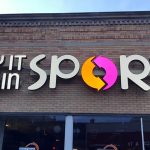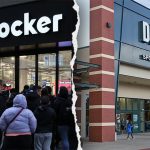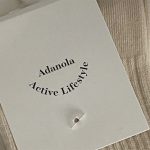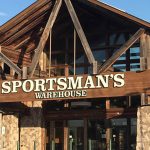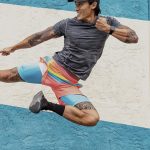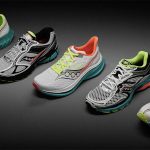The Adidas Group launched an ambitious five-year program, entitled “Route 2015,” with a goal of expanding revenues by 45% to 50% over the next five years. At the same time, management unveiled a new U.S. growth program, “Generation U.S. 2015,” for the Adidas brand, calling for a significantly greater focus on high school kids, ages 14 to 19.
The most noticeable impact of the program will be the promised change in the company’s wholesale channel makeup. By 2015, specialty mall and sporting goods stores are expected to represent nearly 50% of Adidas brand wholesale sales in the U.S. region, or double the 25% they held in 2009. Mall specialty is expected to significantly expand to 24% of total sales from only 6% of sales in 2009 while sporting goods is projected to increase to 23% of the total from 19% of sales.
At a presentation at Adidas Group headquarters in Herzogenaurach, Germany, company CEO Herbert Hainer acknowledged that high school kids head to mall specialty for basketball and sports fashion while tapping sporting goods stores for cleats and other performance product.
“These are the two distribution channels where will have a focus in the future because they are directly taking to the high school kids,” said Hainer.
At the same time, wholesale sales to moderate department stores for the Adidas brand are expected to be reduced to 16% of sales from 32% of sales in 2009. In other channels, field/specialty is expected to be reduced to 30% of sales from 34% of the total; and strategic department stores, to 7% of the total from 9% of sales.
Hainer believes this focus on high school-aged consumers will help drive double-digit annual revenue growth in the U.S. region over the next five years but more importantly, set the foundation for further growth.
“We want to win the hearts and minds of the high school kid on the field and in the hallway,” said Hainer. “We definitely believe the high school kid is the target group where the Adidas brand has to go after.”
U.S. Strategy Focuses Adidas on High School Kids
Hainer noted that the U.S. has 16 million high school kids and they spend $16 billion each year, representing about 20% of the total spending in sporting goods in the U.S. They also spend 80% more than college kids in the U.S.
“This high school kid on the one side influences his peers in the sport and the sports fashion world,” said Hainer. “On the other hand, he's also very much influenced by the athletes and by the individual heroes who are playing in U.S. sports. So what we want to do in the U.S. continuously the next five years is to increase mind share and purchase intent with some relevant brand communication.”
The new push will include “bolder and much more aggressive communication” to high school kids than in the past. He referred to the recently-released TV commercials entitled “Slim Chin” starring comic actor Ken Jeong alongside Adidas NBA endorsers, Derrick Rose and Dwight Howard.
The marketing push will also include three key pillars each year to focus the efforts. For 2011, one focus will be on AdiZero basketball shoes following on the success of AdiZero collections in soccer, football and track & field last year. The other two focuses will be around its Fluid footwear launch in training and a comprehensive marketing push around Adidas Originals.
But with seven million of the 16 million high school kids involved in organized team sports, bigger investments are being planned around team sports, particularly basketball, football, soccer and baseball. Said Hainer, “I don't think there is any doubt that we have the right tools in place for more or less all of these sports.”
In basketball, Hainer noted that Adidas has youth camps and its sponsorship agreement with the NBA. In soccer, Adidas just renewed its sponsorship with MLS and controls a 50% share in soccer boots. In American football, however, he noted that the Adidas brand doesn't yet have the infrastructure from the grassroots level to reach high school kids like basketball and soccer. He said that was one of the primary reasons Adidas chose not to more aggressively pursue a renewal of its NFL licensing deal.
In mid-October, the NFL announced plans to split its apparel licensing rights among seven companies starting in April 2012 with Nike gaining on-field uniform rights. Reebok, which Adidas acquired in 2006, has held the on-field license since 2001.
Hainer said that ultimately, the NFL sponsorship “didn't have an influence down onto the high school kid” and that's why more of a grassroots approach is being launched. “We have to build it for the bottom and later we can go back to the individual leagues and to the NFL as well,” noted Hainer.
Indeed, part of the push includes becoming a more integral player in the team market. Hainer noted that the team business providing on-field or on-court gear is a $1.5 billion business itself but also has a huge halo effect across the sporting goods world. Beyond product innovation, Adidas plans to more aggressively tap the team channel is through its “industry-leading team service engine.”
Adidas' SLD (sports licensing division), which was acquired as part of the Reebok deal, includes a factory/warehouse in Indianapolis with around 500 permanent workers and between 700 to 800 temporary ones. The facility services fan gear for all the sports leagues but for the first time will also service the Adidas brand team sports business, providing the ability to deliver team uniforms to any high school in the U.S. within 48 hours. Said Hainer, “This will be a key advantage in the future in our strategy going forward.”
Adidas Group Strategy Looks to “Outgrow” Nike Over Five-Year Period
Overall, Hainer admitted that Adidas was still “underdeveloped” in the U.S., one of three markets that are slated by Adidas to bring half of its overall sales growth over the next five years, along with China and Russia. “In the U.S. we definitely have the biggest potential,” said Hainer.
The “Route 2015” initiative calls for revenues to expand 45% to 50% to €17 billion by 2015. The bottom line is expected to grow faster at a compounded annual earnings growth rate of 15% per year with a goal of reaching an operating margin of 11% by 2015 at the latest. Adidas Group generated sales of €10.4 billion ($14.3 bn) in 2009. Part of the goal will be to outgrow Nike during the period, said Hainer, claiming that the industry over the last five years has turned into a “two-horse global race.”
The Adidas and Reebok brands are expected to drive more than 90% of the planned increase in sales. The Adidas Sport Performance segment is expected to grow to €8.5 billion by 2015 from €6.2 billion estimated at the close of this year. Adidas Sport Style sales are expected to climb to €3.7 billion from €2 billion this year while Reebok is projected to rise to €3 billion from €1.9 billion expected in 2010.
“Just one of these divisions will be as big as the Number 3,” said Erich Stamminger, global head of brands, at the meeting, referring to long-time local rival Puma, which last year had sales of €2.5 billion ($3.4 bn).
Key strategies include establishing Reebok as the world's leading fitness and training brand to capitalize on the “fit for life” trend; focusing Adidas Sport Performance on running, football (soccer) and basketball; and expanding Adidas Sport Style in the fast fashion business. Adidas also wants to lead the industry in providing customization options as well as interactive experiences such as miCoach.
Adidas Group, which hasn't made an acquisition since Reebok in 2006, also expects to play a role in consolidation. “It stands to reason that the Adidas Group will continue in its role as 'Consolidator-in-Chief', taking market share through organic growth or exploring other business opportunities if they align with the strategic brand priorities,” Hainer said.




